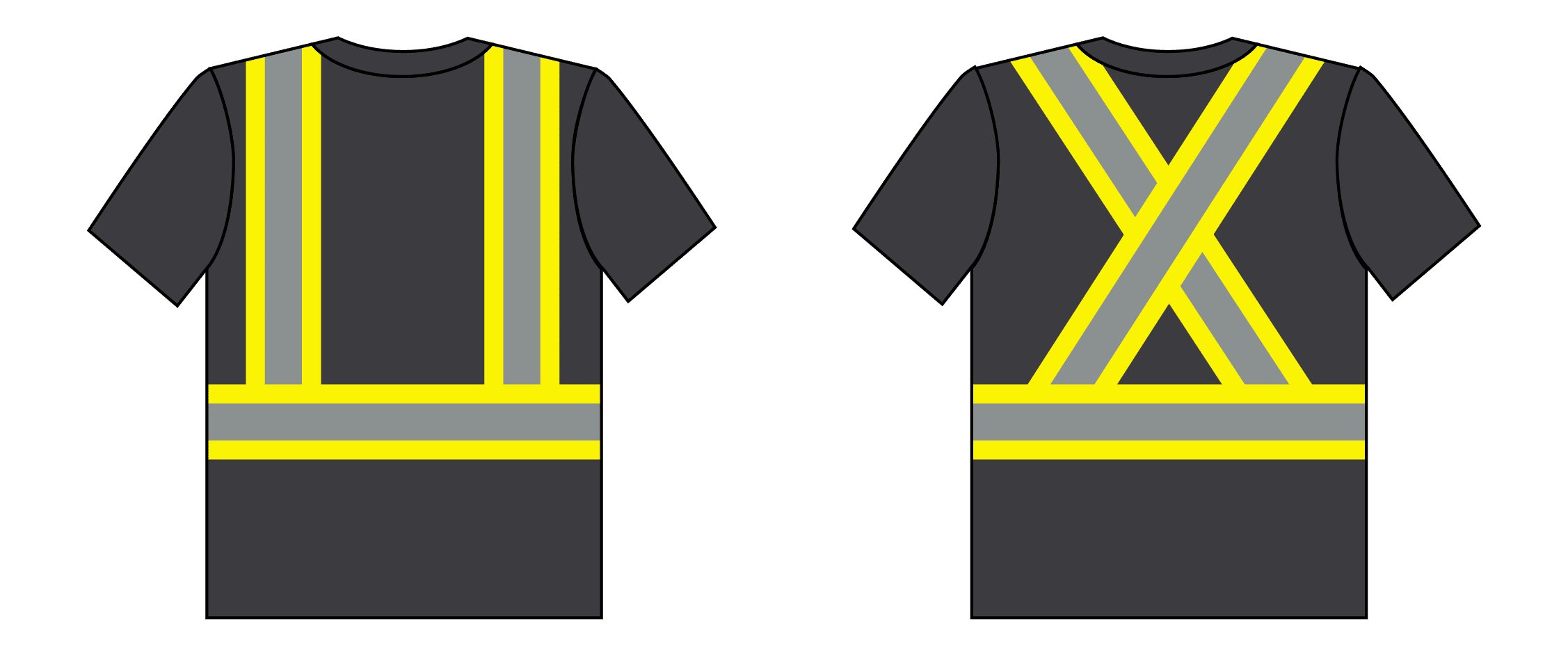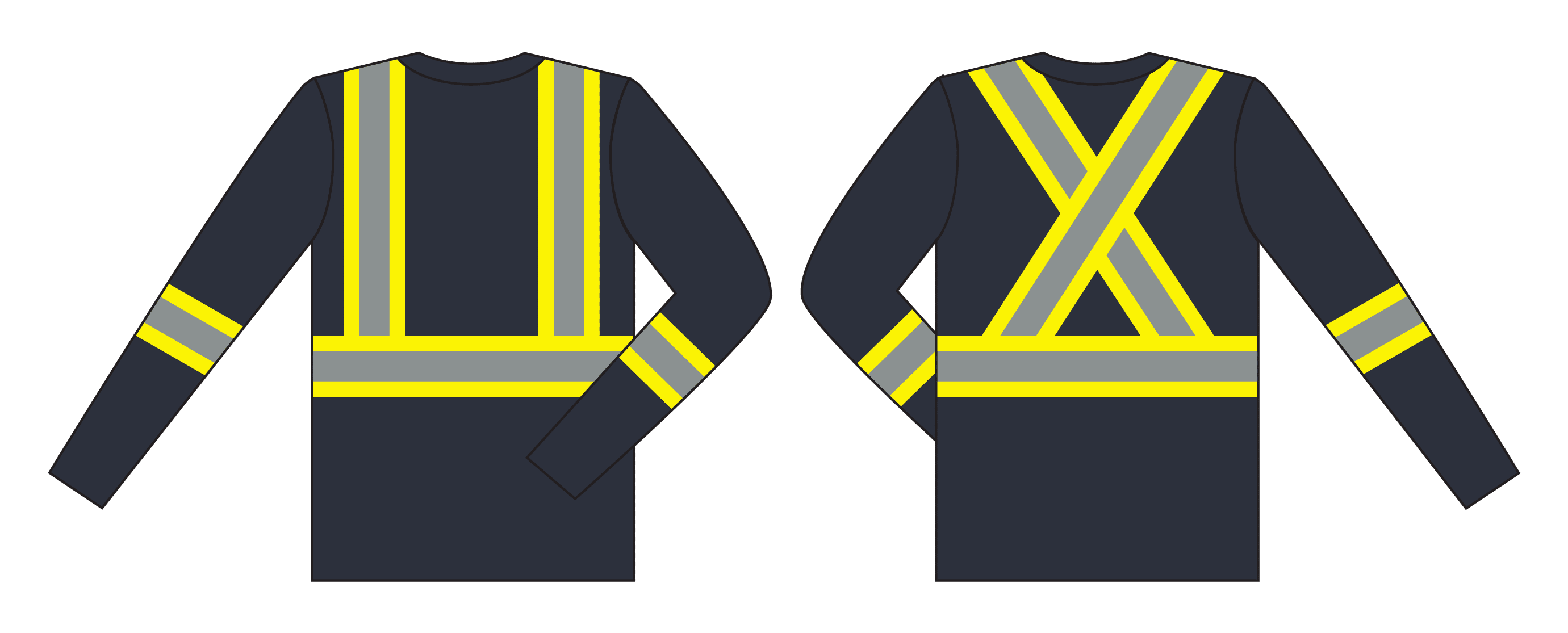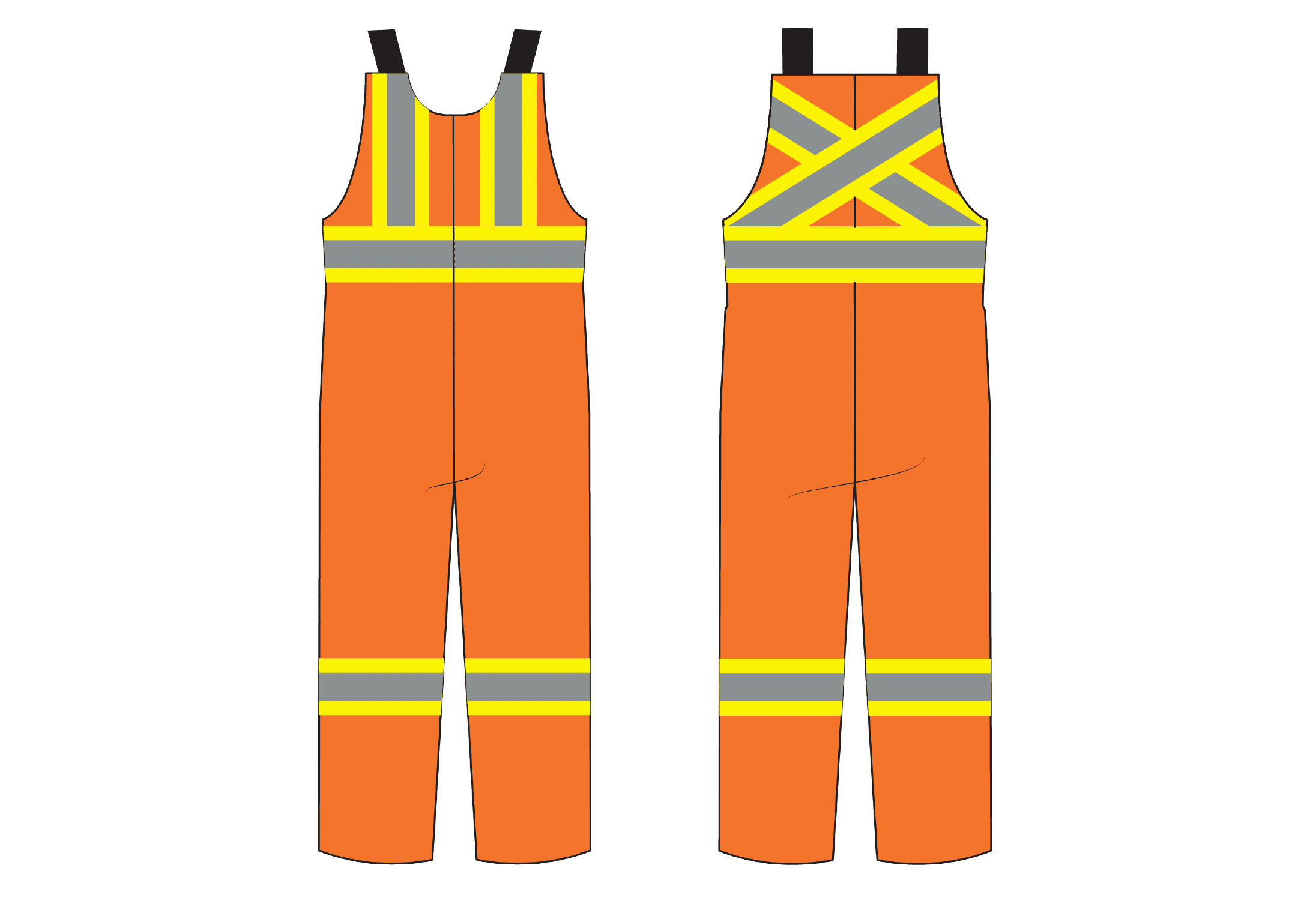The CSA Standard Z96-22, High-Visibility Safety Apparel sets out levels of retroreflective performance (i.e., the effectiveness of material in returning light to its source), the colours and luminosity of background materials, and how much of the body that should be covered by the high-visibility components. There are also special requirements for garments that also need to provide electrical flash and flame protection. Note that although specifications for apparel classes are similar to those in ANSI/ISEA 107, these CSA classes differ in that they specify body coverage rather than minimum areas.
CSA lists three classes of garments based on body coverage provided. Each class covers the torso (waist to neck) and limbs according to the minimum body coverage areas specified for each class.
Details for each of the classes are listed below. For more details on the exact specifications, please refer to the Standard. (Note: While the Standard does not set out the requirements for high-visibility apparel for specific jobs, it does provide some examples of jobs where the different classes may be appropriate.)
 |
Class 1Garments with stripes on the shoulders and around the waist on any background materials. |
 |
|
|
|
Class 2As per the CSA standard, background materials of HVSA must be fluorescent. Garments of that class must provide full coverage of the upper torso (front, backsides and shoulders) and side coverage of at least 50% from the bottom edge to the top of the shoulder. |
 |
Class 2(Particular case) As an exception, overalls are considered Class 2 garments. Retroreflective material on the shoulder is not required. Note: The leg bands shown here are optional. |
|
|
Class 3This class combines Class 2 clothing with the addition of stripes around the arms and legs. They must be stripes, combined-performance material or a mix of background and retroreflective material. |
To comply with the CSA Standard, any high-visibility safety apparel must meet the following criteria for the stripes/bands: